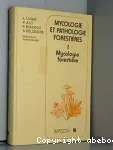Adresse
Infodoc : Réseau des bibliothèques et centres de documentation d'AgroParisTechFrance
contact

Catégories
|
Thésaurus Agrovoc , Catégories du schéma AGRIS/CARIS , Production végétale , Génétique Et Amélioration Des Plantes , Champignon , Zygomycotina
ZygomycotinaSynonyme(s)Phycomycetes Fungi inferior (phycomycetes)Voir aussi : |
Documents disponibles dans cette catégorie (8)
 Ajouter le résultat dans votre panier Faire une suggestion Affiner la recherche Interroger des sources externes
Ajouter le résultat dans votre panier Faire une suggestion Affiner la recherche Interroger des sources externes
 Tiré à part
Tiré à part
 Tiré à part
Tiré à part
 Livre
Livre978-2-225-46871-1487 p.
487 p.ISBN : 978-2-225-46871-1 
 Tiré à part
Tiré à part
 Tiré à part
Tiré à part
 Tiré à part
Tiré à part
 Livre1 vol. (XV-1018 p.)
Livre1 vol. (XV-1018 p.)
1 vol. (XV-1018 p.)
 Tiré à part
Tiré à part






